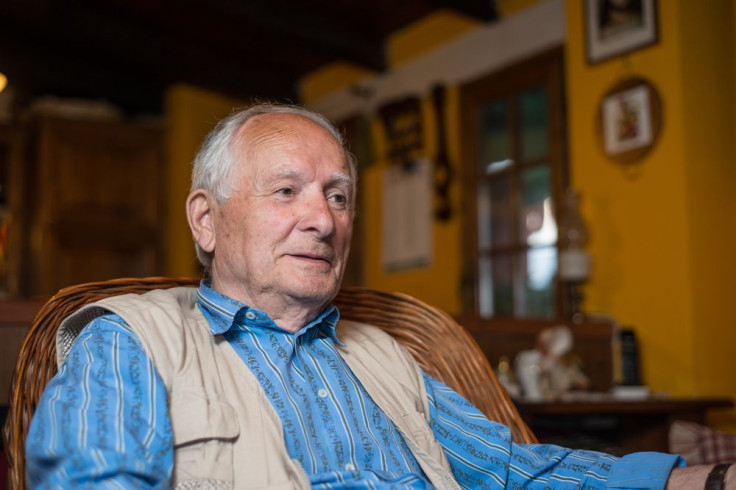The Way You Watch TV Could Help Determine Whether You Have Glaucoma

Roughly 2.7 million adults (and climbing) in the U.S. are diagnosed with glaucoma, a range of eye conditions that result in optic nerve damage, according to the National Institutes of Health (NIH). This damage, in turn, causes pressure to build in the eyes to the point that it diminishes a person’s vision. It’s a tricky condition, because this loss of vision is so gradual that most people don’t get their eyes checked until it’s too late — long after preventive measures can be taken. Researchers from the UK, however, believe televisions may help detect and monitor the disease, and they wrote about it in the journal Frontiers in Aging Neuroscience.
Funded by the UK charity Fight for Sight, researchers from City University London investigated how watching TV could expose the parts of a scene someone could see, and what they were missing. Glaucoma patients increasingly lose their ability to see a full picture; primary open-angle glaucoma, the most common form, has no noticeable symptoms except the gradual decline of peripheral vision. By testing where on a screen a person is focusing their attention, the researchers were able to tell whether someone was developing glaucoma.
For the study, they compared the vision of 32 healthy elderly people to that of 44 patients diagnosed with glaucoma. Both groups took standard vision exams and, for the glaucoma patients, disease severity was noted. The groups then underwent an experiment in which they were shown three TV and film clips on a computer while an eye-tracking device looked at their eyes’ movement, paying special attention to where they focused attention.
The information gathered was used to produce a group of maps known as saccade maps. As we look at objects on a screen, and in real life, our eyes don’t fixate on one thing. Instead, we move our eyes around, taking in specific details that form the whole picture. A saccade map is an amalgamation of all these movements, which are shown as a bunch of lines. And the researchers were able to use these to see whose sight was faltering, enabling a glaucoma diagnosis.
“These are early results but we’ve found we can identify patients with glaucoma by monitoring how people watch TV,” said Dr. David Crabb, professor of statistics and vision research at the university, in a press release. “This could make a huge difference in detecting or monitoring a disease which currently results in one in 10 of all blindness registrations in the UK and about a million National Health Service appointments a year for those with the disease.”
The NIH suspects that glaucoma incidences in the U.S. will increase substantially over the coming years, with as many as six million people suffering from reduced vision by 2050.
Source: Crabb D, Smith N, Zhu H. What's on TV? Detecting age-related neurodegenerative eye disease using eye movement scanpaths. Frontiers in Aging Neuroscience. 2014.



























